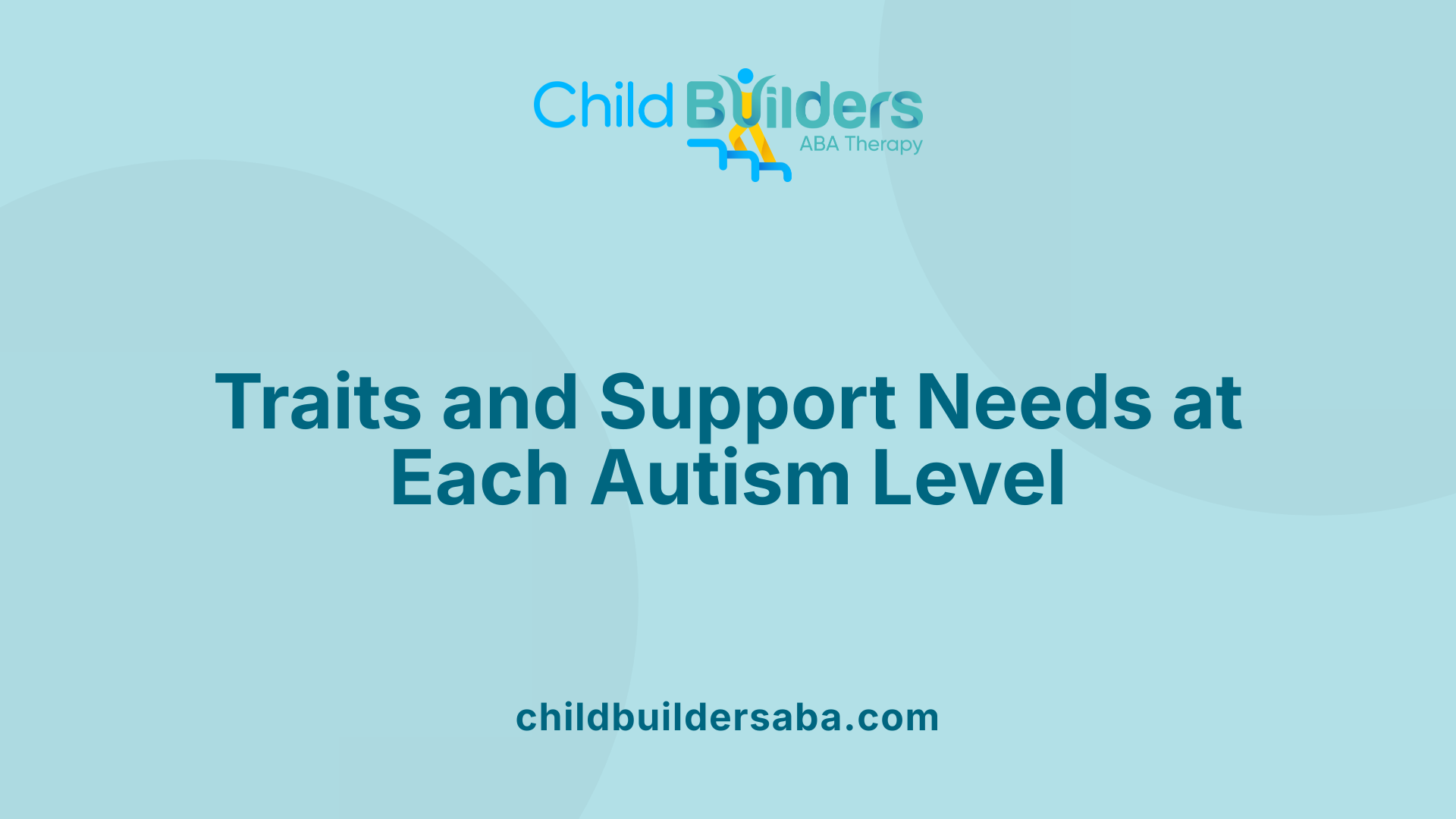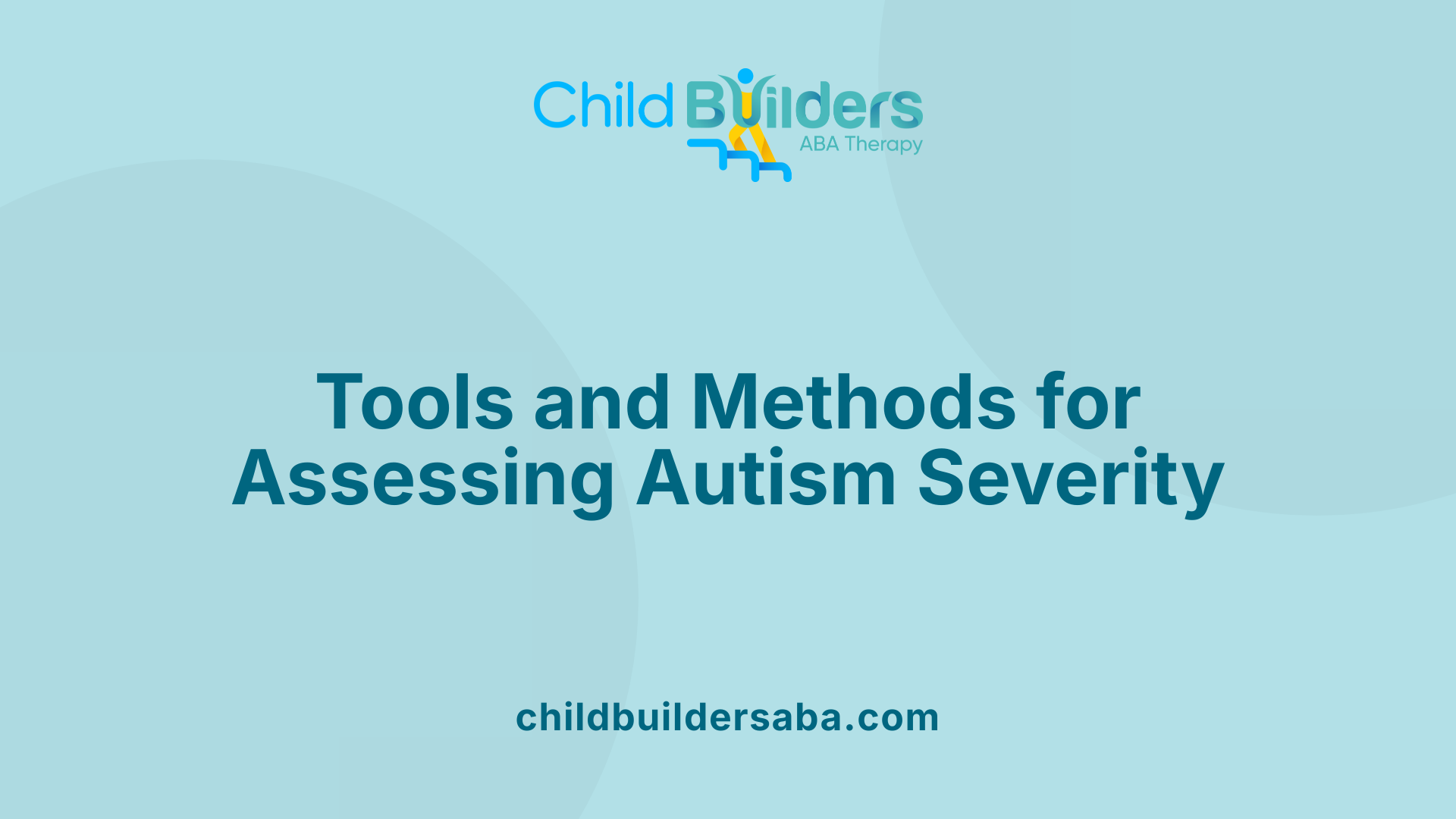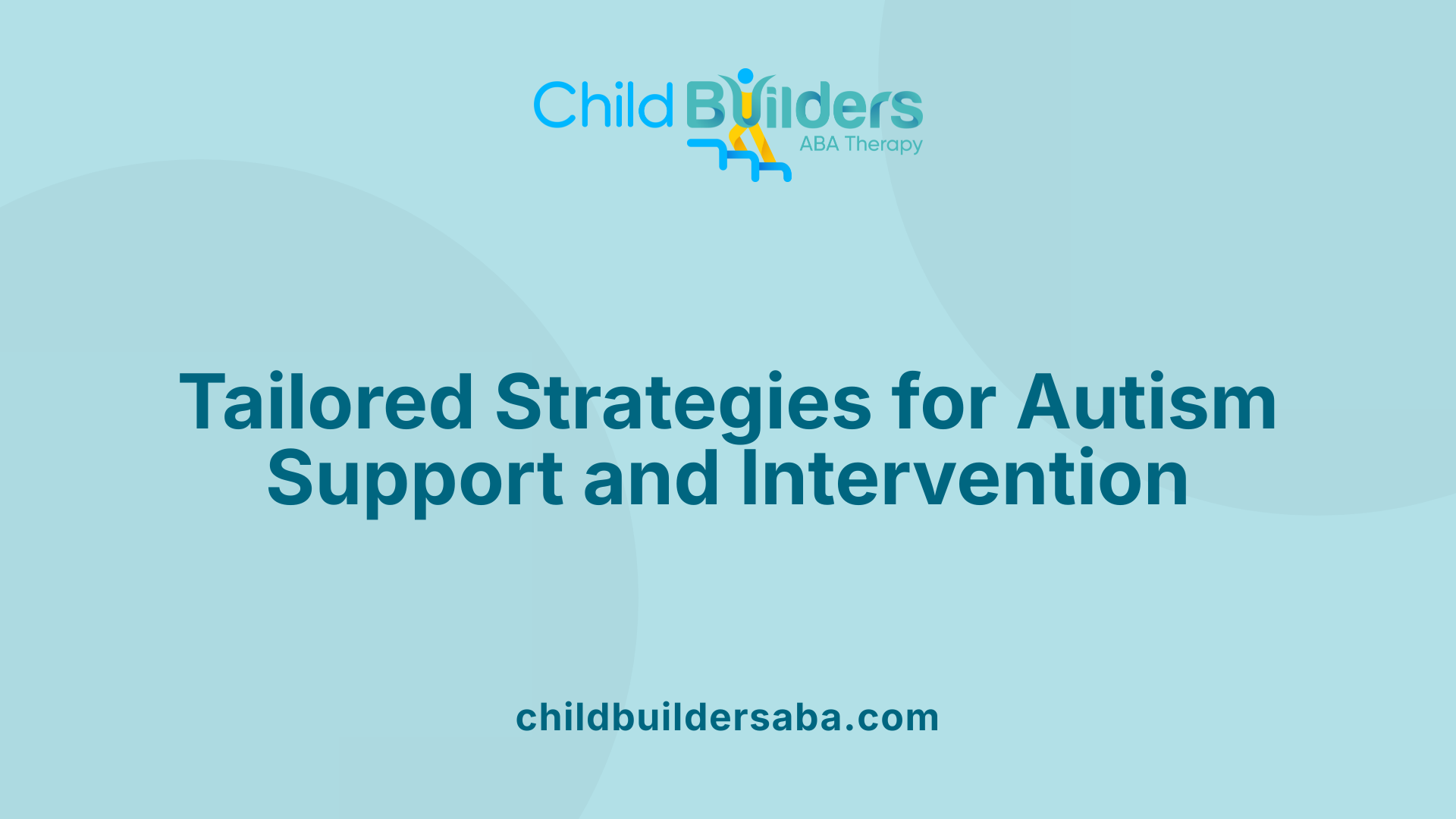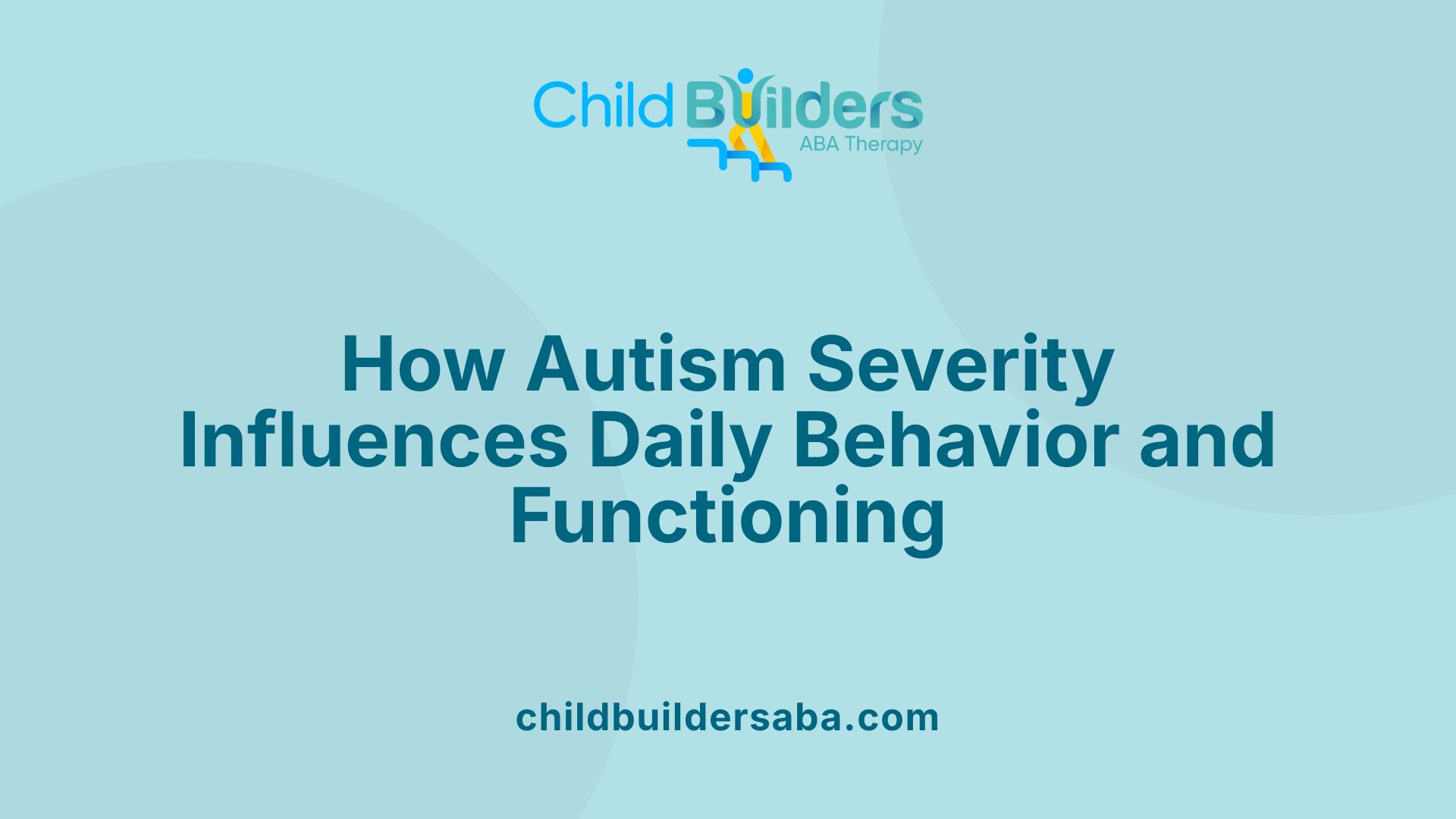3 Levels of Autism

An Overview of Autism Spectrum Disorder Severity Levels
Autism Spectrum Disorder (ASD) is a complex neurodevelopmental condition characterized by a wide range of symptoms affecting communication, behavior, and social interaction. Central to understanding ASD is recognizing the three severity levels outlined by the DSM-5, which help clinicians, educators, and families tailor their approaches to support and intervention. These levels—ranging from requiring support to very substantial support—indicate how much assistance an individual needs to manage daily activities, social interactions, and behavioral challenges. This article explores the characteristics, diagnosis, support strategies, and implications of the distinct ASD levels to provide a comprehensive understanding of this spectrum.
DSM-5 Classification of Autism Severity Levels

What are the three levels of autism spectrum disorder (ASD) as defined by DSM-5?
The DSM-5, published by the American Psychiatric Association in 2013, categorizes autism spectrum disorder into three distinct levels: Level 1, Level 2, and Level 3. These levels are designed to reflect the severity of symptoms and notably indicate the support required by each individual for daily functioning.
Level 1 ASD, often referred to as requiring support, includes individuals with noticeable impairments in social communication and some rigidity in behavior. They may be able to function independently with minimal support, but social and behavioral challenges can interfere with daily life. Children and adults at this level may need occasional help in areas like organization or social skills.
Level 2 ASD, requiring substantial support, characterizes individuals with more pronounced difficulties. They demonstrate significant deficits in social communication, such as limited responses and difficulty understanding nonverbal cues. Restricted behaviors are more evident, often necessitating more regular and structured interventions, including speech and occupational therapy.
Level 3 ASD involves very substantial support needs, often being highly manifest in severe deficits in social interaction and communication. These individuals frequently have limited or no verbal communication, engage in repetitive behaviors, and show difficulty adapting to environments. They usually require comprehensive, ongoing support, accommodations, and therapies.
What criteria are used to classify severity levels?
The classification hinges on two main areas: core symptoms and the degree of support necessary. The core symptoms include difficulties in social reciprocity, challenges with nonverbal communication, and the presence of restricted, repetitive behaviors.
For each level, the DSM-5 specifies the impact of symptoms on daily life and the support needed. Level 1 involves mild symptoms that minimally interfere with independence, while Level 2 symptoms cause frequent challenges in communication and social engagement. Level 3 reflects severe impairments that significantly impede functioning.
The severity levels are primarily based on the intensity of social communication deficits and the behaviors associated with restricted interests and repetitive actions. This straightforward framework helps clinicians establish clear diagnostic categories, guide treatment planning, and tailor support strategies.
Additional context on severity classification
While these levels provide a useful overview of symptom severity, they do not encompass the full spectrum of an individual's abilities or strengths. Support needs may fluctuate over time and be influenced by environmental factors, co-occurring conditions, and individual differences.
Furthermore, the DSM-5 emphasizes that these levels are not rigid boxes but rather descriptors of current support needs. Recognizing the heterogeneity of autism, ongoing assessment and personalized intervention remain crucial.
In summary, the DSM-5's three-tiered severity classification helps clarify the level of intervention necessary for each person, offering a practical guide for clinicians, educators, and families. This approach facilitates targeted therapies, accessible supports, and better understanding of each individual's unique presentation within the autism spectrum.
Characteristics and Traits of Each Autism Level

What characteristics, symptoms, and traits are associated with each level of autism?
Autism spectrum disorder (ASD) varies greatly in how it affects individuals, depending on the severity level. These levels help describe the support needs and behavioral challenges faced by people on the spectrum.
Level 1: Requiring Support
Individuals at this level often exhibit noticeable social communication difficulties. They might struggle to initiate or sustain conversations and may have inflexible routines or behaviors that interfere with daily activities.
Many with Level 1 ASD can communicate verbally, but they might find it hard to understand social cues, like body language or tone of voice. They may also have limited interests, but generally possess higher cognitive abilities and can sometimes lead relatively independent lives.
Traits include:
- Difficulty with social interactions
- Challenges with planning and organizing
- Inflexibility or rigidity in routines
- Some repetitive behaviors, such as hand-flapping or lining up objects
Though their symptoms are noticeable, they often require only minimal support, such as occasional therapy or accommodations.
Level 2: Requiring Substantial Support
Individuals with Level 2 ASD display more obvious problems in social and verbal communication. They might speak in short sentences or have limited responses to social overtures and often struggle to understand nonverbal cues.
Repetitive behaviors such as restricted interests and routines are more frequent and pronounced. These individuals may become upset with changes and need structured support to manage daily challenges.
Core traits include:
- Noticeable social communication deficits
- Difficulty with understanding and using nonverbal communication
- Repetitive motor movements or speech (echolalia)
- Increased distress with changes or transitions
These individuals typically benefit from specific therapies—like speech therapy and behavioral interventions—and require support in educational settings.
Level 3: Requiring Very Substantial Support
This is the most severe level of ASD. People at this stage often have limited or nonverbal communication, minimal social interaction, and behaviors that significantly impair daily functioning.
They often exhibit intense stereotyped behaviors, such as spinning or hand-flapping, and heightened sensory sensitivities. They also tend to have severe challenges with routines; even minor changes can cause high levels of distress.
Traits of Level 3 ASD include:
- Severe communication impairments, often nonverbal
- Very limited or no social interaction
- Repetitive, stereotyped behaviors that interfere with daily life
- Overwhelming sensory sensitivities
- Potential for aggressive or self-injurious behaviors
Individuals with Level 3 autism usually require lifelong, comprehensive support and specialized therapies such as intensive behavioral interventions.
Core Symptoms and Severity Progression
Across all levels, core features include difficulties with social communication, restricted and repetitive behaviors, and sensory sensitivities. However, the severity and support required increase from Level 1 to Level 3.
While Level 1 individuals may succeed with some assistance, those at Level 3 often need constant supervision and tailored support systems. Recognizing these traits helps in planning personalized interventions and support strategies to maximize quality of life.
| Aspect | Level 1 | Level 2 | Level 3 | Description of Traits and Support Needs |
|---|---|---|---|---|
| Verbal communication | Sometimes able to speak clearly | Often limited or echolalic | Often nonverbal | From mild speech challenges to severe communication impairments |
| Social interaction | Noticeable but manageable | Significant difficulties | Minimal interaction | Varying degrees of social skill impairments |
| Repetitive behaviors | Often mild | Frequent and pronounced | Severe and constant | Hand-flapping, routines, sensory sensitivities |
| Support needed | Minimal support | Substantial support | Very substantial, lifelong support | Support varies from occasional therapy to intensive interventions |
| Adaptability | Relatively flexible | Inflexible routines | Very rigid routines | Responses to change range from manageable to extreme |
Understanding these distinctions allows caregivers, educators, and healthcare professionals to develop appropriate strategies tailored to each individual’s needs, fostering better outcomes and improved quality of life.
Diagnosis and Assessment Tools for Autism Severity

How are autism severity levels diagnosed, and what assessment tools are used?
The diagnosis of autism spectrum disorder (ASD) severity levels is a meticulous process that involves detailed evaluations of a child's social, communicative, and behavioral functioning. Clinicians rely on standardized diagnostic criteria outlined in the DSM-5, which categorize ASD into three levels—Level 1 (requiring support), Level 2 (requiring substantial support), and Level 3 (requiring very substantial support)—based on the degree of support needed.
Assessment tools play a crucial role in gathering comprehensive behavioral data. Among the most utilized tools are the Autism Diagnostic Observation Schedule (ADOS) and the Autism Diagnostic Interview-Revised (ADI-R). The ADOS involves direct observation of the child's behavior, focusing on social interaction, communication, and repetitive behaviors, often conducted by trained clinicians. The ADI-R complements this with a caregiver interview that captures developmental history and current behaviors.
Other instruments such as the Childhood Autism Rating Scale (CARS) and the Gilliam Autism Rating Scale (GARS-2) are also widely employed. These scales involve both caregiver reports and clinician ratings, aiming to quantify the severity of symptoms and help differentiate levels of support required.
The evaluation process integrates results from these tools with clinical judgment. Professionals consider the child's developmental history, current functioning, and environmental factors to interpret the data accurately. This holistic approach ensures that classification into a specific severity level reflects both observable behaviors and the child's support needs.
In summary, the diagnosis of ASD severity is a detailed process that combines standardized assessment tools with expert clinical interpretation. This approach helps guide tailored interventions, support plans, and resource allocation, ensuring individuals receive appropriate care aligned with their specific needs.
Support and Intervention Strategies

What support needs and intervention strategies are associated with different autism levels?
Support requirements and the types of intervention strategies differ greatly depending on an individual's level of autism severity. Recognizing these distinctions allows for tailored support plans that can effectively address the unique challenges faced by each person.
Interventions for Level 1 Autism (Requiring Support)
Children and adults classified at Level 1 autism often have mild difficulties in social communication and behavioral inflexibility. Interventions at this level aim to enhance skills and promote independence.
- Social Skills Training: Programs that foster social interaction, such as social stories and role-playing.
- Communication Support: Use of visual aids, picture exchange communication systems (PECS), or speech therapy to improve verbal and nonverbal communication.
- Behavioral Interventions: Techniques like positive reinforcement to encourage appropriate behaviors.
- Educational Accommodations: Support in school settings, including structured routines and organizational aids.
These approaches help individuals develop their strengths, manage social challenges, and participate more fully in daily activities.
Interventions for Level 2 Autism (Requiring Substantial Support)
Individuals at Level 2 often have more noticeable difficulties, such as limited verbal communication and significant behavioral challenges. Interventions here tend to be more intensive.
- Applied Behavior Analysis (ABA): Evidence-based therapy that focuses on increasing functional skills and reducing problematic behaviors.
- Speech and Language Therapy: Focuses on improving communication abilities, which may include alternative and augmentative communication (AAC) devices.
- Occupational Therapy: Helps develop daily living skills and sensory integration techniques.
- Structured Behavioral Support: Routines and visual cues to reduce anxiety and improve functioning.
Goals revolve around enhancing communication, social interactions, and daily life skills, thus promoting greater independence.
Interventions for Level 3 Autism (Requiring Very Substantial Support)
At this most severe level, individuals often have significant communication barriers, engage in repetitive behaviors, and require extensive support.
- Comprehensive, Individualized Programs: Multidisciplinary approaches combining behavioral, speech, occupational, and sensory therapies.
- Assistive and Augmentative Communication Devices: To facilitate basic communication for nonverbal individuals.
- Intensive Behavioral Support: Continuous reinforcement strategies and behavioral management plans.
- Support with Activities of Daily Living: Assistance with self-care, mobility, and safety.
- Environmental Modifications: Creating sensory-friendly environments to reduce overstimulation.
Lifelong, consistent support is crucial for managing daily challenges and enhancing quality of life.
Goals of Support and Therapy
Across all levels, the core aim of intervention is not to 'cure' autism but to maximize independence, reduce distress, and improve overall well-being.
- Enhancing Communication Skills: Facilitating the ability to express needs and participate in social interactions.
- Improving Social Engagement: Building relationships and social understanding.
- Fostering Behavioral Regulation: Managing distress and repetitive behaviors constructively.
- Supporting Daily Living and Independence: Developing skills necessary for personal care, community involvement, and employment.
- Promoting Well-Being: Addressing sensory sensitivities, promoting safety, and supporting mental health.
Person-centered planning, early intervention, and evidence-based practices are critical across all severity levels. The emphasis remains on respecting individual strengths, preferences, and support needs, aiming to improve their quality of life.
| Autism Level | Typical Support Needs | Common Intervention Strategies | Goals of Support |
|---|---|---|---|
| Level 1 | Mild social and behavioral challenges | Social skills training, communication support, behavioral supports | Independence, social participation, communication |
| Level 2 | Moderate to marked challenges in communication and behavior | ABA, speech therapy, occupational therapy, structured routines | Skill acquisition, reduced distress, social engagement |
| Level 3 | Severe communication and behavioral difficulties | Multidisciplinary intensive interventions, AAC, daily support | Enhance quality of life, safety, daily functioning |
Understanding these differences guides caregivers, educators, and healthcare providers in designing appropriate, supportive, and compassionate interventions for individuals across the autism spectrum.
Impact of Autism Severity on Behavior and Daily Life

How do autism severity levels influence behavior, communication, and daily functioning?
Autism information is often categorized into three levels to help understand the support needs and severity of symptoms. These levels—Level 1, Level 2, and Level 3—primarily reflect how significantly social, communication, and behavioral challenges affect an individual’s daily life.
Level 1 autism is considered the mildest form, where individuals typically require some support. They may have difficulties initiating social interactions or understanding social cues, but often communicate verbally and can manage basic daily tasks. Their behaviors tend to be less noticeable and less disruptive, allowing many to maintain a degree of independence.
Level 2 autism indicates a more substantial level of difficulty. Individuals at this level often struggle with communication, such as forming sentences or understanding nonverbal signals, and exhibit clearer repetitive behaviors. These challenges interfere with daily routines and social engagement, necessitating structured support, therapies, and accommodations.
Level 3 autism is the most severe form, involving profound challenges in communication and social interaction. These individuals often have minimal or no verbal speech, show limited social responsiveness, and may engage in severe repetitive behaviors. They often require extensive supervision and support to navigate daily activities, manage behaviors, and adapt to environmental changes.
Autism severity directly impacts how individuals behave and engage with their environment. Those with higher severity tend to experience greater difficulties in adapting to everyday situations and may display behaviors such as aggression, self-injury, or sensory sensitivities. Support needs increase accordingly, ranging from communication aids and behavioral interventions to modifications in living and learning environments.
While core symptoms are central to defining these severity levels, it’s important to recognize that additional factors influence daily functioning. Co-occurring conditions like intellectual disabilities, anxiety, or sensory processing disorders can further complicate behavioral management and independence.
Developmental changes are also common. Some individuals improve over time with appropriate interventions, gaining better communication skills and reducing problematic behaviors. Conversely, others may face increasing challenges due to environmental stressors or lack of support.
A comprehensive approach to understanding autism severity considers not only the core symptoms but also the individual’s adaptive skills, mental health, social environment, and access to services. This multidimensional perspective provides a more accurate picture of how autism impacts daily life across different individuals.
In summary, the severity levels significantly influence behavior, communication, and independence. Recognizing these differences helps tailor interventions and support strategies to improve quality of life and promote greater inclusion for individuals on the autism spectrum.
Educational Resources and Support Frameworks
Is there educational and resource information available about autism spectrum disorder classifications?
Yes, there is a wealth of educational resources and support frameworks designed to help families, educators, and healthcare providers understand autism spectrum disorder (ASD) classifications. Central to this information are the diagnostic criteria set out in the DSM-5 and DSM-5-TR, which classify ASD into three severity levels based on support needs: Level 1 (requiring support), Level 2 (requiring substantial support), and Level 3 (requiring very substantial support). These classifications rest on the severity of social communication deficits and the presence of restricted and repetitive behaviors.
The DSM provides detailed descriptions of each level, helping caregivers and professionals understand the challenges faced by individuals at different points on the spectrum. For example, Level 1 autism might involve minor communication issues but generally allows for greater independence, while Level 3 autism describes individuals with severe communication limitations and significant behavioral challenges who require extensive support.
In addition, specialized tables within the DSM coding system clarify the specific behaviors and support needs associated with each level, facilitating accurate diagnosis and tailored intervention plans.
The Centers for Disease Control and Prevention (CDC) and other prominent health organizations also offer extensive guidelines on diagnosing ASD. These include the importance of combining caregiver reports with professional observations to make comprehensive assessments. Diagnostic tools like the Autism Diagnostic Observation Schedule (ADOS-2), Autism Diagnostic Interview-Revised (ADI-R), and screening measures such as the Modified Checklist for Autism in Toddlers (M-CHAT) further aid in distinguishing severity levels.
Educational resources often feature visual aids, training modules, and support networks that help families and teachers recognize the signs associated with each severity level and implement appropriate support strategies. These strategies encompass behavioral therapies like Applied Behavior Analysis (ABA), communication supports such as augmentative and alternative communication (AAC) devices, and environmental accommodations tailored to individual needs.
Furthermore, awareness campaigns and online platforms provide access to stories, forums, and expert advice, fostering a community of support for people across the spectrum.
In summary, comprehensive educational tools and guidelines about ASD classifications are widely available, promoting early diagnosis and customized support interventions that can significantly improve quality of life for individuals with autism.
The Significance of Recognizing Autism Severity Levels
Understanding the three levels of autism spectrum disorder as outlined by the DSM-5 is crucial for effective diagnosis, intervention, and support planning. These classifications not only help in tailoring therapies to meet individual needs but also provide clarity for families and educators in understanding the challenges faced by each person with ASD. While current assessments primarily focus on core symptoms and support requirements, a growing recognition of the need for a multidimensional approach emphasizes the importance of considering co-occurring conditions and environmental factors. As research continues to evolve, so too does our ability to support individuals across the spectrum, promoting improved outcomes and quality of life.
References
- ASD levels of severity - Autism Speaks
- Autism severity and its relationship to disability - PMC
- The 3 Levels of Autism Explained - Lane Regional Medical Center
- Clinical Testing and Diagnosis for Autism Spectrum Disorder - CDC
- Approach to autism spectrum disorder: Using the new DSM-V ...
- Level 3 Autism: Guide to Treatment, Daily Life & Prospects - Blue ABA
- Levels of autism: Symptoms and criteria - Medical News Today
- What Are the 3 Levels of Autism Spectrum Disorder? - Verywell Health
- Levels of autism: Common symptoms per level - Songbird Therapy
- What are the Different Levels of Autism Spectrum Disorder?



.jpg)

































































































